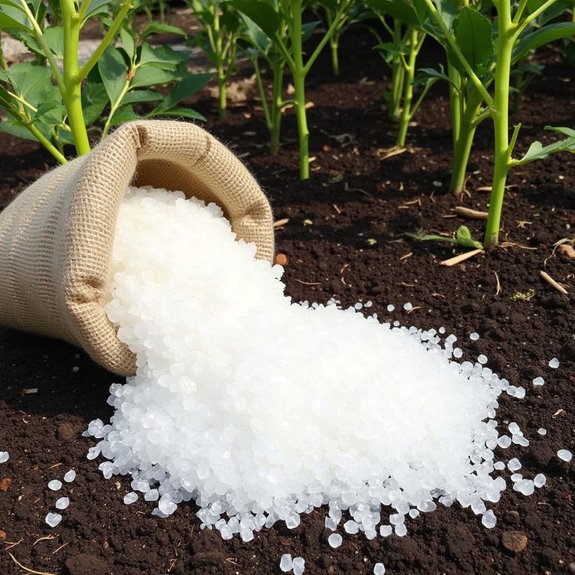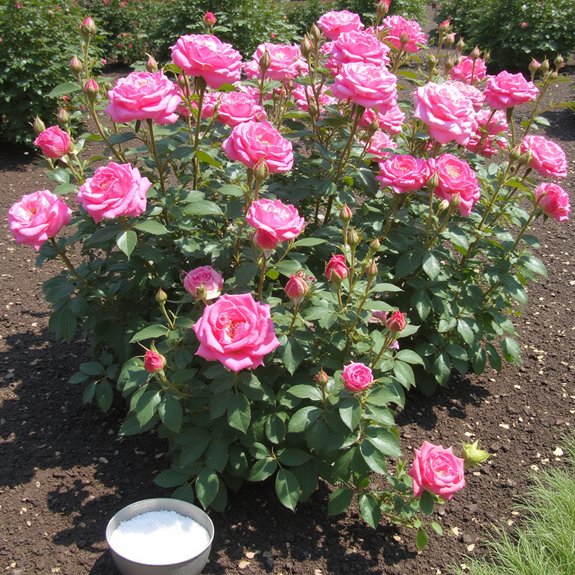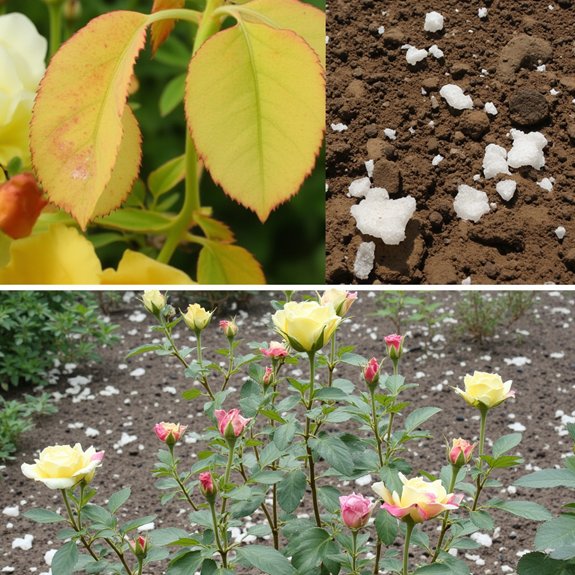Rose gardeners swear by Epsom salt as a miracle cure, sprinkling it around their prized bushes like fairy dust. This white crystalline powder, chemically known as magnesium sulfate, promises greener leaves and more abundant blooms. However, what works for one garden may spell disaster for another. The difference lies in understanding when your roses actually need magnesium versus when you’re creating problems that didn’t exist before.
Contents
- 1 The Origins and Popularity of Epsom Salt in Gardens
- 2 Understanding Magnesium’s Role in Rose Health
- 3 When Epsom Salt Actually Benefits Your Roses
- 4 The Hidden Dangers of Overusing Epsom Salt
- 5 Environmental Consequences of Excessive Magnesium
- 6 Soil Testing: Your First Line of Defense
- 7 Better Alternatives for Thriving Rose Gardens
The Origins and Popularity of Epsom Salt in Gardens

While many gardeners swear by Epsom salt for their roses, this common household remedy has surprisingly humble beginnings. A cattle farmer in Epsom, England first discovered magnesium sulfate centuries ago, initially using it for livestock health. The substance eventually became popular for human muscle relief in warm baths.
Its shift to gardening represents a fascinating change from medical to agricultural use. However, the practice relies heavily on historical usage passed down through generations rather than rigorous testing. Modern gardening myths often elevate Epsom salt as a cure-all, despite limited scientific evidence supporting these widespread claims about plant benefits.
Understanding Magnesium’s Role in Rose Health
Magnesium serves as a central component in chlorophyll molecules, making it crucial for photosynthesis in roses. Without adequate magnesium, roses cannot produce the green pigment necessary for converting sunlight into energy. This nutrient enables proper enzyme function, protein synthesis, and carbohydrate metabolism within plant cells.
However, magnesium absorption becomes problematic when soil pH exceeds 7.5 or falls below 6.0. Deficiency symptoms include yellowing between leaf veins while veins remain green, reduced flowering, and weakened stems. Rose health depends on balanced nutrition, yet magnesium deficiency is relatively uncommon in most garden soils, making supplementation often unnecessary.
When Epsom Salt Actually Benefits Your Roses

How does a gardener determine when Epsom salt will truly help their roses rather than harm them? The answer lies in confirmed magnesium deficiency through proper soil testing.
Epsom salt benefits roses only when soil tests reveal magnesium levels below 25-50 ppm. Yellow leaves with green veins, particularly on older foliage, signal potential magnesium deficiency. However, these symptoms can indicate other issues, making soil testing essential.
Apply one tablespoon per bush monthly only after confirming deficiency. Without verified magnesium deficiency, Epsom salt creates nutrient imbalances, potentially blocking calcium and potassium uptake. Smart gardeners test first, then treat accordingly.
Beyond the apparent simplicity of sprinkling Epsom salt around rose bushes lies a troubling reality that many gardeners discover too late. Overuse creates nutrient imbalance, blocking calcium and potassium absorption while flooding soil with unnecessary magnesium. These hidden risks include leaf scorch, stunted growth, and weakened plant immunity. Excess magnesium washes into waterways, harming aquatic ecosystems and reducing beneficial soil microbes. Plants suffering from overapplication often display yellowing leaves and poor flowering, ironically mimicking the deficiency symptoms gardeners thought they were treating. Without soil testing, well-meaning rose enthusiasts frequently worsen existing problems.
Environmental Consequences of Excessive Magnesium

When gardeners unknowingly dump excess magnesium into their soil, the consequences ripple far beyond their rose beds. Magnesium toxicity disrupts soil chemistry, blocking plants from absorbing essential nutrients like calcium and potassium. This creates a domino effect that weakens entire garden ecosystems.
The real trouble starts when rain washes unused magnesium into storm drains, streams, and rivers. These elevated magnesium levels harm aquatic ecosystems by altering water chemistry and stressing fish populations. Additionally, excess magnesium releases toxic aluminum compounds into groundwater, creating long-term contamination issues that affect both plant roots and drinking water sources.
Soil Testing: Your First Line of Defense
Before gardeners reach for that bag of Epsom salt, a simple soil test can save them from making costly mistakes. Professional soil tests reveal pH levels, nutrient availability, and whether magnesium deficiency actually exists. Different soil types retain nutrients differently—clay soils hold magnesium longer than sandy soils that drain quickly.
Testing costs $15-30 but prevents years of unnecessary applications. Results arrive within 1-2 weeks, showing exact nutrient levels and recommendations. Many universities offer affordable testing services through extension offices.
Armed with accurate data, gardeners can address real deficiencies instead of guessing, ensuring roses receive precisely what they need for ideal health.
Better Alternatives for Thriving Rose Gardens
Rather than chasing quick fixes with questionable supplements, successful rose gardeners focus on proven fundamentals that deliver consistent results. Well-aged compost provides steady nutrition while improving soil structure, water retention, and beneficial microbial activity. Apply 2-3 inches annually around rose bases, keeping material away from stems. Compost benefits extend beyond feeding plants, creating resilient growing conditions that naturally resist pests and diseases. Organic fertilizers like fish emulsion, bone meal, or balanced granular blends supply essential macronutrients without environmental risks. These time-tested approaches build lasting soil health, supporting vigorous growth and abundant blooms season after season.
